Retail merchandising is essential for every store. It shapes how products are displayed and sold. With proper merchandising, stores can attract more customers and increase sales. But what are the basics of retail merchandising? Let me guide you through them step by step. In this article, we will learn the basics of retail merchandising to grow your store and promote products to maximize customer satisfaction.
Table of Contents
ToggleUnderstanding Retail Merchandising
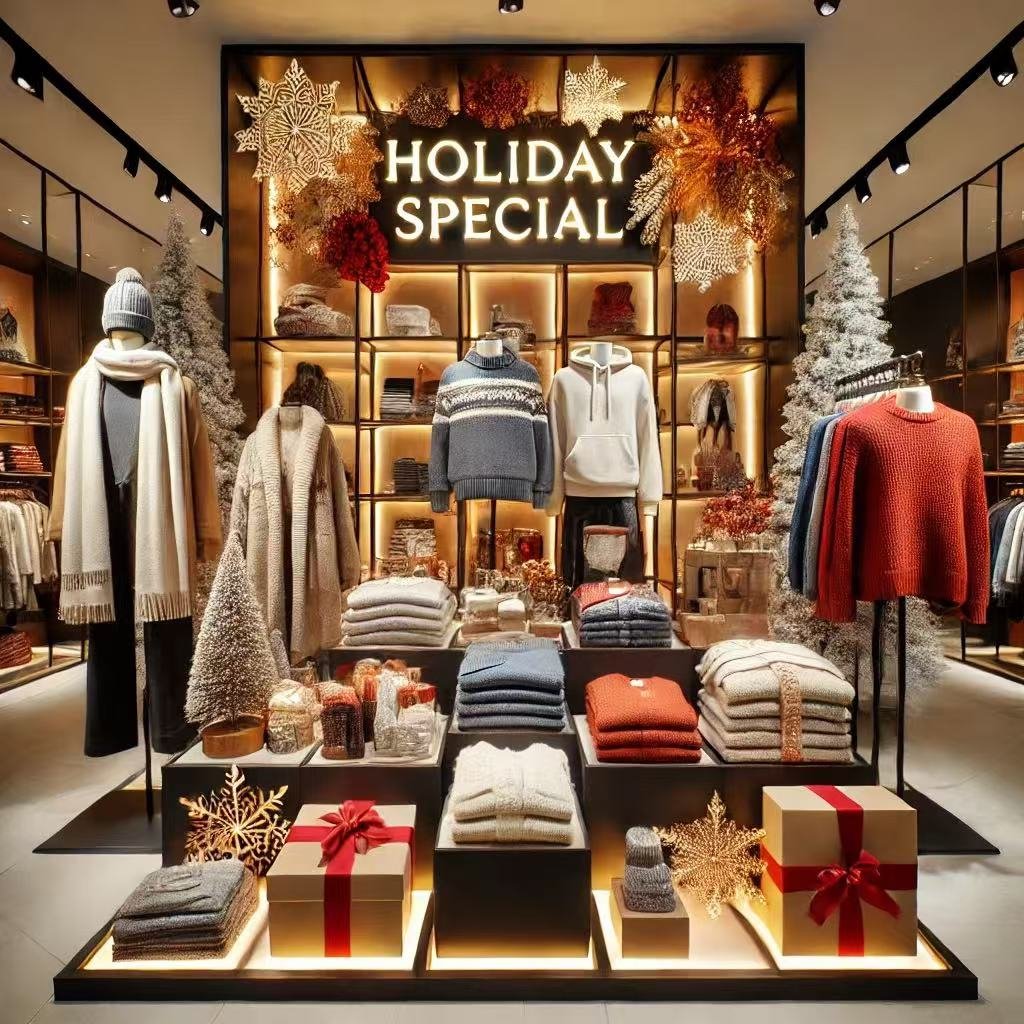
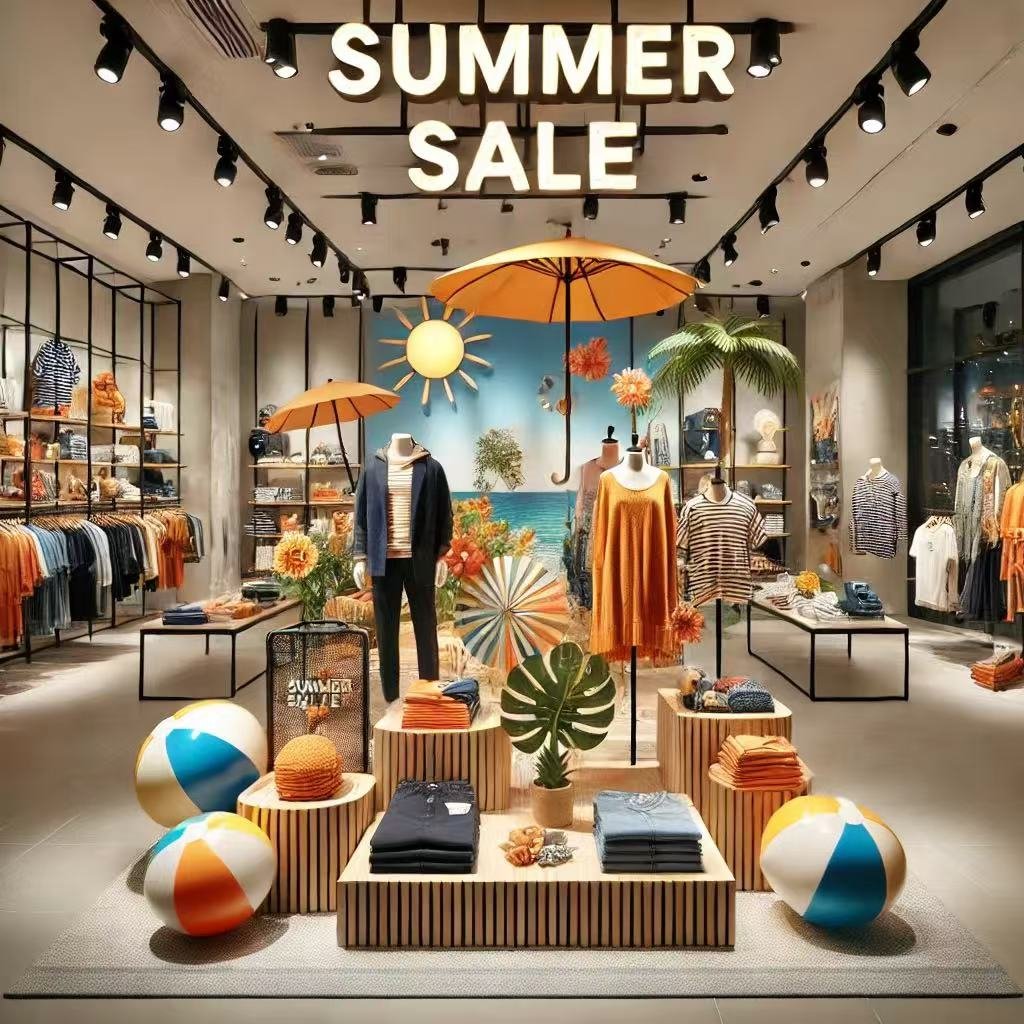
Retail merchandising is the backbone of a successful store. It influences customer behavior and drives sales. Let’s break down its essentials to ensure you fully grasp its importance.
What Does Retail Merchandising Involve
Retail merchandising involves designing and managing how products are displayed in a store. Its purpose is to encourage purchases and enhance the shopping experience. Every element, from the layout to the lighting, matters.
At its core, merchandising aims to create a seamless customer journey. Customers should easily find what they need and feel tempted to explore more. This increases both sales and satisfaction.
For example, think of a store with clear signage, well-lit displays, and attractive promotions. These features encourage customers to spend more time browsing. In contrast, a cluttered or poorly lit store may drive customers away.
Visual displays, product placement, and promotions are key components. Each one plays a specific role in influencing buying decisions.
Why Is Retail Merchandising Crucial
Effective retail merchandising benefits both the customer and the retailer. For customers, it simplifies their shopping journey. For retailers, it boosts revenue and strengthens brand loyalty.
Consider this: Customers often decide to buy within seconds. A well-placed product display can make all the difference. That’s why retail merchandising is vital.
Additionally, merchandising communicates a store’s brand identity. Luxury stores use high-end displays to convey exclusivity. On the other hand, discount stores highlight affordability with bold, colorful signs.
The Role of Store Layout
A store layout shapes the flow of customer traffic. It determines how customers interact with products. The goal is to guide customers through the store naturally while showcasing key items.
There are several popular layout styles:
- 1. Grid layout: This features organized aisles, ideal for grocery stores. It maximizes space and efficiency.
- 2. Free-flow layout: This is more open and flexible, perfect for boutiques. It encourages exploration and creativity.
- 3. Loop layout: This directs customers along a clear pathway, often used in department stores.
Choosing the right layout depends on your store type and customer behavior. Observe how customers move in your store. Do they prefer open spaces or guided pathways? Adjust the layout to match their preferences.
The Psychology Behind Product Placement
Product placement is a strategic aspect of retail merchandising. It focuses on positioning items where customers are most likely to notice them.
Eye-level shelves are prime locations. Customers naturally look here first. Place your best-selling or high-margin products at this level.
Grouping related items together also works well. For instance, pairing shoes with socks can boost sales. Customers see the connection and feel inclined to buy both.
Endcaps, or displays at the end of aisles, are another effective tool. These spots attract attention and are ideal for promoting seasonal or discounted items.
Transitioning further, we will now explore the impact of visual merchandising.
The Power of Visual Merchandising
Visual merchandising focuses on aesthetics. It uses colors, lighting, and themes to create a visually appealing shopping environment.
Color is a powerful tool. Bright colors like red and yellow grab attention. Softer tones like blue and green create a calming atmosphere. Choose colors that match your brand and the mood you want to convey.
Lighting is equally important. Highlight specific products with spotlights. Use warm lighting to make the store feel welcoming. Proper lighting can transform an ordinary display into a focal point.
Props and mannequins also enhance visual merchandising. Show customers how to use or style a product. This helps them imagine owning it. For instance, displaying a fully set dining table can inspire customers to buy the entire set.
The Importance of Promotions in Retail Merchandising
Promotions are essential for attracting customers. They create a sense of urgency and drive impulse buying.
Clear signage is key. Use bold fonts and bright colors to highlight discounts. Signs like “50% Off” or “Buy One, Get One Free” are hard to ignore.
Place promotional displays in high-traffic areas. These could be near entrances or checkout counters. Customers passing through these areas are more likely to notice and act on the offers.
Rotate promotions regularly to maintain interest. If customers see the same deals repeatedly, they may lose excitement. Keep the offers fresh and relevant to the season or trends.
How Customer Understanding Shapes Merchandising
Knowing your customers is crucial in retail merchandising. Their preferences and behaviors should guide every decision.
For example, my typical customer, Ariel, values cost-effectiveness. He prefers affordable yet high-quality products. To cater to him, I would highlight value-driven promotions. Products combining quality and affordability should take center stage.
Customer demographics also matter. Younger shoppers may prefer trendy and vibrant displays. Older shoppers may value clarity and practicality. Tailor your merchandising approach to match your audience.
Observe customer behavior in your store. Which areas do they spend the most time in? Which products do they often ignore? Use this information to optimize your displays.
Seasonal Merchandising: A Must-Do Strategy
Seasonal merchandising keeps your store relevant. It aligns with holidays, weather changes, or cultural events.
For example, during Christmas, use red and green decorations. Showcase holiday-themed products prominently. This creates a festive atmosphere and encourages seasonal purchases.
Adjust your displays for every major season. Back-to-school, summer sales, and Black Friday are great opportunities. Seasonal themes make your store feel current and engaging.
Promote seasonal items early. This gives customers time to plan their purchases. Highlight these products on social media and in-store.
Measuring Merchandising Success
Retail merchandising is an evolving process. Measuring its success helps you refine your strategies.
Track sales data to identify which displays perform well. For example, if a particular endcap boosts sales, replicate it in other locations.
Customer feedback is another valuable tool. Ask shoppers about their experience. Did they find the store easy to navigate? Were the promotions clear? Use their input to make improvements.
Observe customer behavior. Which areas do they spend the most time in? Which products catch their attention? This information provides insights into what works and what doesn’t.
Consistency Is Key
Consistency ties all merchandising elements together. Your store layout, product placement, and visual displays should align with your brand.
For instance, if you run a luxury boutique, your displays should reflect elegance and sophistication. If you operate a discount store, focus on bold and clear promotions.
Consistency builds trust. Customers know what to expect when they enter your store. This strengthens brand loyalty and encourages repeat visits.
Final Thoughts on Retail Merchandising
Retail merchandising is both an art and a science. It requires creativity, strategy, and a deep understanding of your customers. By mastering these basics, you can create a store that stands out and drives sales.
Remember, merchandising is not a one-time task. It’s an ongoing process of observation, adaptation, and improvement. With consistent effort, your store can achieve its full potential.
So, what are the basics of retail merchandising? They are the foundation of every successful retail store. Implement these strategies, and watch your sales grow.
Planning Your Store Layout
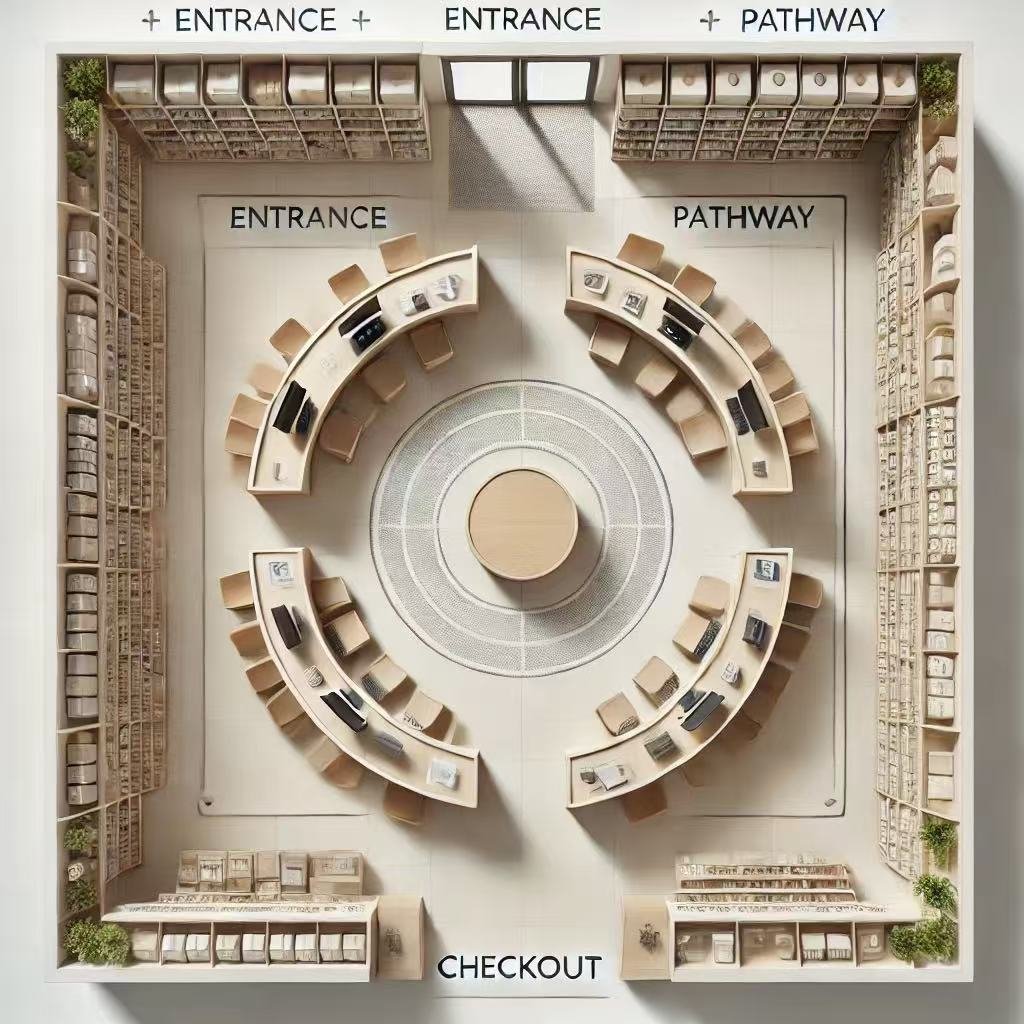
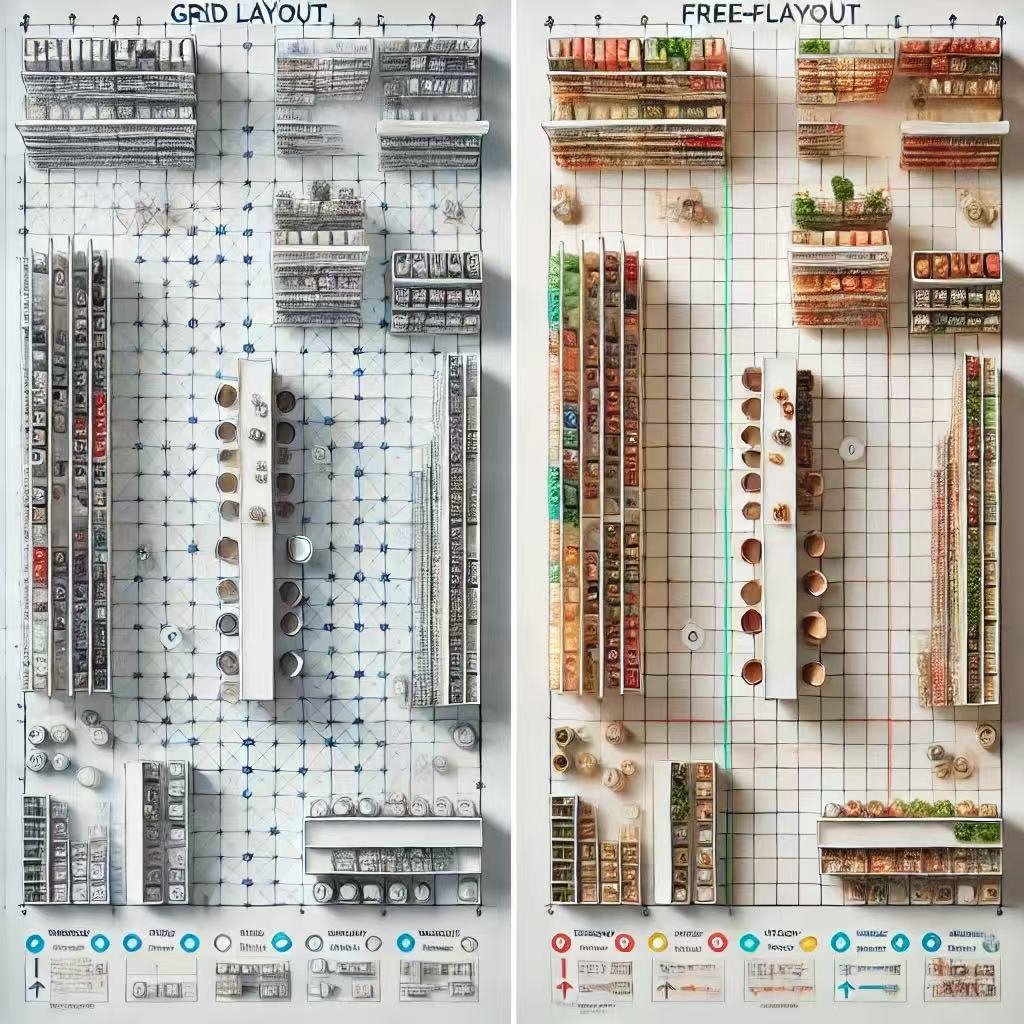
Planning your store layout is essential for success in retail merchandising. A well-organized layout ensures a smooth shopping experience. It can also influence customer behavior and boost sales. Let’s explore this topic in detail.
Why Is Store Layout Important
Your store layout determines how customers interact with your space. A poor layout confuses customers and drives them away. A good layout encourages exploration and maximizes sales opportunities.
For example, consider a grocery store. A strategic layout places essentials like milk and bread at the back. This forces customers to pass on other products and increases the chances of impulse purchases.
In contrast, a cluttered or confusing layout frustrates shoppers. Customers might leave without buying anything.
Store layout also impacts brand perception. A neat, organized store builds trust and loyalty. It communicates professionalism and attention to detail.
Identifying High-Traffic Areas
High-traffic areas are key to planning your store layout. These are spots where customers naturally spend more time.
Entrance areas, checkout counters, and product hotspots fall into this category. Use these spaces wisely. For example, place best-sellers or promotional items in these areas. Customers are more likely to notice and buy them.
The placement of high-margin items in these zones can significantly boost profits. Regularly analyze traffic patterns to adjust displays as needed.
Use tools like heatmaps or customer flow trackers for better insights. These tools help identify where customers linger most. With this data, you can refine your layout and make informed decisions.
Choosing the Right Layout Style
The type of layout you choose depends on your store and products. Different layouts suit different business needs.
Grid Layout
The grid layout is highly structured. It consists of organized aisles and is ideal for grocery or convenience stores.
Advantages include:
- • Maximizing product display space
- • Helping customers navigate easily
However, it lacks flexibility and may feel monotonous to shoppers.
Free-Flow Layout
The free-flow layout allows creativity. It encourages customers to explore the store.
This layout works well for boutiques or specialty stores. It gives a relaxed shopping experience.
The downside is that it requires careful planning to avoid chaos.
Loop Layout
The loop layout guides customers in a circular path. It exposes them to more products.
This style is popular in department stores. It ensures customers see a variety of items before reaching the checkout.
Each layout type has its pros and cons. Choose one based on your store size, product type, and target audience.
Placing Products Strategically
Product placement is another critical aspect of store layout. Customers pay attention to eye-level shelves first. Place best-selling or high-margin items there.
Impulse buys should be near the checkout counter. This encourages last-minute purchases.
Group related items together. For example, place snacks near beverages. This strategy promotes cross-selling and boosts sales.
Rotate products frequently to keep the store fresh. Regular changes capture attention and encourage repeat visits.
Designing Aisles and Pathways
Aisles and pathways guide customer flow. They must be wide enough for easy movement. At the same time, they should not waste space.
Keep high-demand products in central aisles. Reserve corner spaces for seasonal or promotional items.
Avoid dead zones where customers rarely visit. Use attractive displays to draw attention to these areas. For instance, add bright lighting or banners.
Make pathways intuitive. Shoppers should feel comfortable navigating without assistance.
Using Signs and Visual Cues
Signs and visual cues enhance your store layout. They guide customers to different sections and improve their shopping experience.
For instance, use clear signs for product categories. This saves customers time and reduces frustration.
Highlight special sections like sales or new arrivals with bold visuals. Use colors, lights, or banners to grab attention.
Signs also help in maintaining order. For example, directional arrows can prevent crowding in busy aisles.
Invest in high-quality signage. It reflects your brand’s professionalism and enhances the overall aesthetic.
Creating Zones for Different Needs
Divide your store into zones based on customer needs. For instance, create separate areas for high-margin, seasonal, and discounted products.
A “golden zone” should showcase your most profitable items. Customers naturally gravitate toward these spaces.
Reserve quieter zones for niche or specialized items. Customers seeking these products will appreciate the focused experience.
Zones make your store easier to navigate. They also allow you to tailor merchandising strategies for specific sections.
Ensuring Accessibility and Comfort
Accessibility is vital for a successful layout. Your store must accommodate all customers, including those with disabilities.
Provide wide aisles and ramps where necessary. Avoid clutter, which can create obstacles.
Comfort is equally important. Customers are more likely to stay longer in a pleasant environment.
Use appropriate lighting and maintain comfortable temperatures. Add seating areas if possible. These small touches make a big difference.
Incorporating Technology in Layout Design
Technology can optimize your store layout. Digital tools like 3D modeling software help you visualize and test layouts.
Use data from point-of-sale systems to analyze shopping patterns. This helps identify high-performing areas and products.
Interactive displays or kiosks enhance customer engagement. For example, digital screens can showcase promotions or product details.
Technology makes your layout adaptable. It allows you to experiment and implement changes quickly.
Adapting to Seasonal Changes
Your store layout should evolve with seasons and trends. Seasonal displays keep your store relevant and exciting.
For example, during Christmas, create festive zones with themed decorations. Highlight seasonal products in prime locations. Adapt layouts to accommodate new trends or product launches. This shows customers that your store is dynamic and up-to-date. Regular updates also encourage repeat visits. Customers will look forward to seeing what’s new.
Evaluating Your Layout’s Performance
Planning doesn’t stop after implementation. Continuously evaluate your layout’s performance. Track key metrics like foot traffic, sales, and customer feedback. These insights highlight areas for improvement. Conduct regular walkthroughs of your store. Look for potential issues like cluttered aisles or overlooked zones. Test new layouts periodically. Small changes can have a significant impact.
Conclusion
Planning your store layout is an ongoing process. It combines strategy, creativity, and customer insight. From identifying high-traffic areas to adapting to seasonal changes, every detail matters. A well-planned layout improves customer experience and boosts sales. Now that you understand the basics, start applying these tips. Your store layout has the potential to transform your business.
The Role of Product Placement
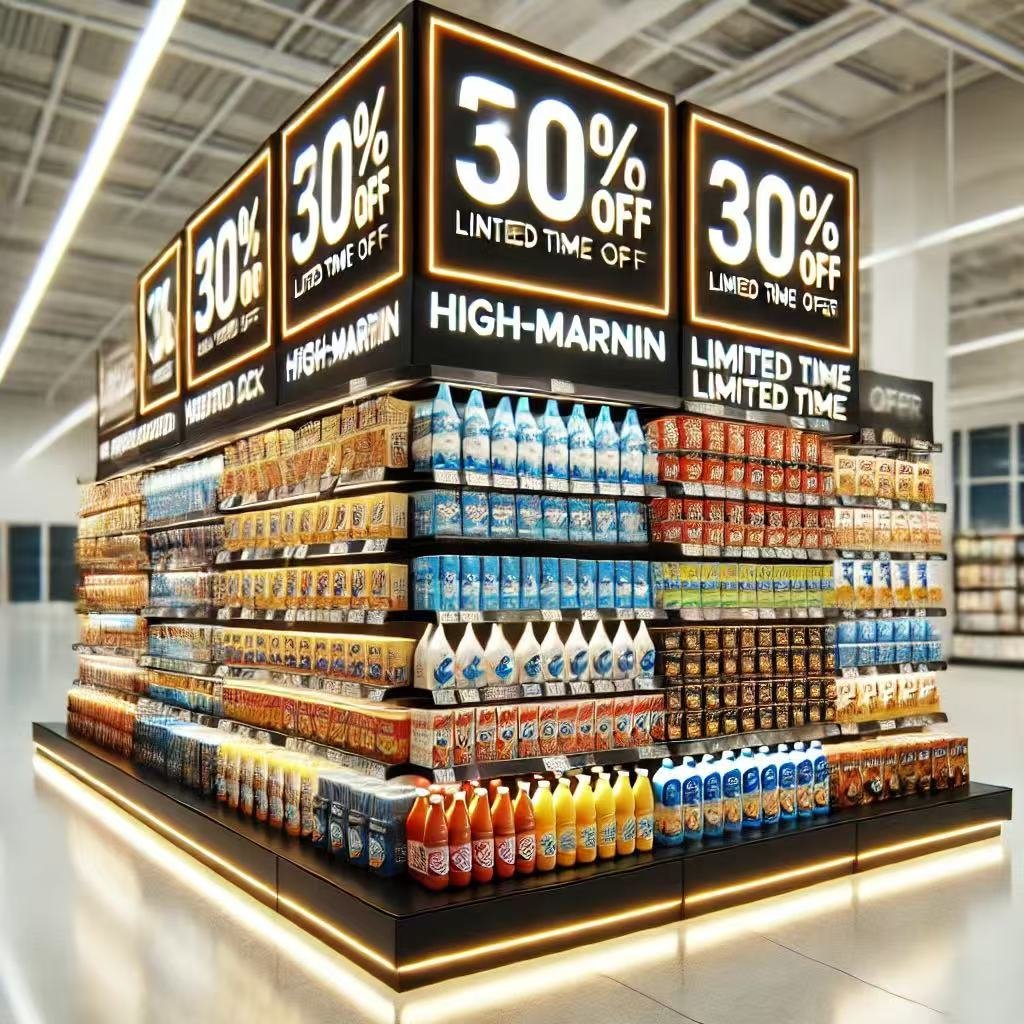
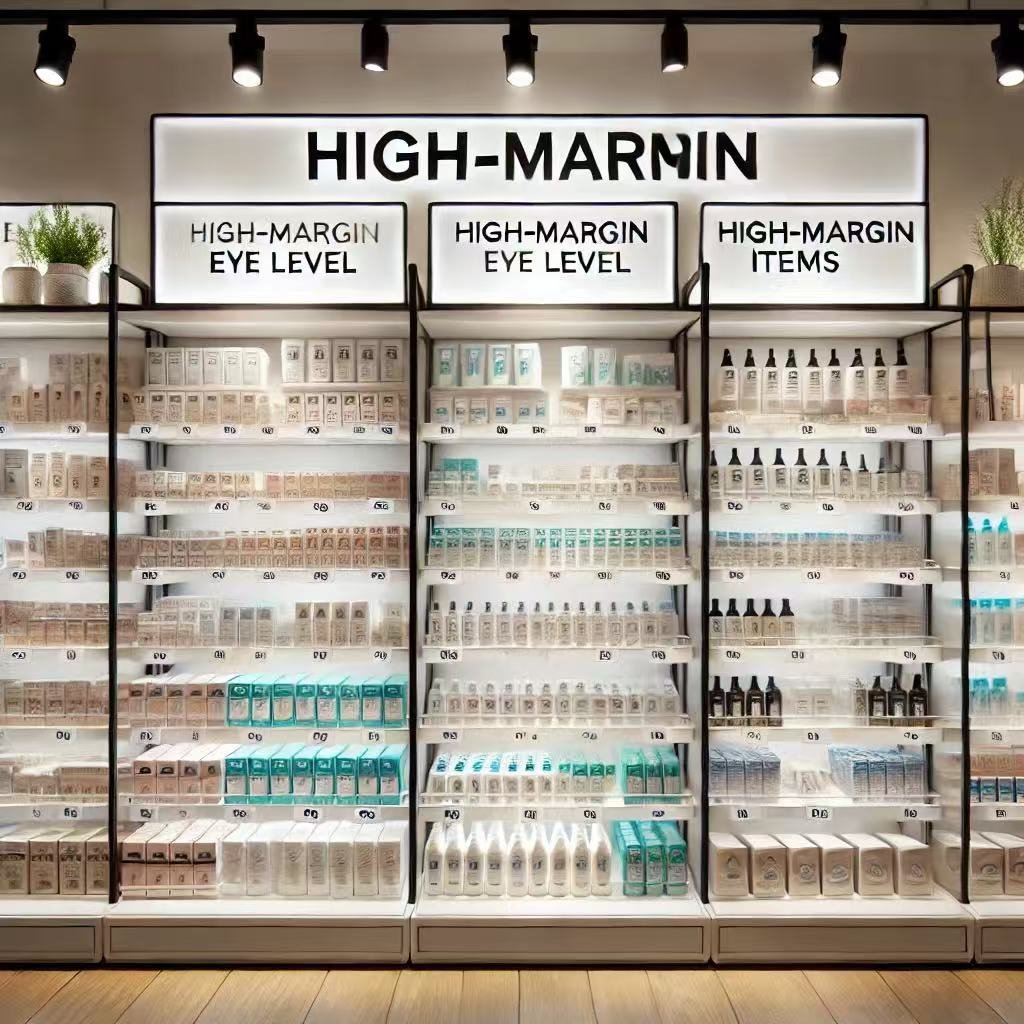
Product placement plays a vital role in retail merchandising. It influences customer behavior and directly impacts sales. By placing products strategically, you can maximize visibility and encourage purchases. Let’s explore how to master product placement.
Why Product Placement Matters
Product placement determines how customers interact with your store. It influences their decision to buy. Proper placement increases visibility and ensures customers notice key items.
For example, when high-demand products are at eye level, they attract more attention. Similarly, placing complementary items together encourages additional purchases.
Poor placement can lead to lost sales. If customers can’t find what they need, they may leave frustrated. On the other hand, thoughtful placement enhances the shopping experience and builds customer loyalty.
Effective product placement can also help highlight new or seasonal items. Use it to guide customers through your store and increase dwell time.
Eye-Level Shelves: The Golden Zone
Eye-level shelves are prime real estate in any store. Customers naturally notice these shelves first. Use this space for high-margin or best-selling products.
For example, place branded or premium items at eye level. This increases their chances of being purchased. Avoid wasting this space on low-demand products.
For children’s products, adjust the placement to their eye level. This strategy works well in stores selling toys or snacks.
Rotating items on these shelves keeps the selection fresh. Customers will often scan this area for something new. Take advantage of their curiosity.
Grouping Complementary Items
Placing related products together boosts sales. This strategy, known as cross-merchandising, creates convenience for customers.
For instance, display shoes alongside socks or bread near butter. These combinations make shopping easier and encourage customers to buy more.
Cross-merchandising works best with clear signage. Highlight the connection between grouped items to grab attention.
Seasonal groupings also work well. For example, during the holiday season, pair gift wrapping materials with festive decorations.
Endcap Displays
Endcaps are highly visible spaces at the end of aisles. They are perfect for promotional or seasonal items.
Use endcaps to highlight limited-time offers or best-sellers. These displays attract attention and drive impulse purchases.
Rotate endcap displays regularly to maintain customer interest. This ensures repeat visits and keeps the store looking fresh.
For maximum impact, use bold visuals and clear signage on endcaps. This draws customers in and makes them curious.
Impulse Buying Near the Checkout
The checkout area is ideal for impulse purchases. Customers waiting in line are more likely to pick up small, affordable items.
Place snacks, magazines, or small gadgets near the checkout. These items require minimal decision-making and are easy to grab.
Rotate these products frequently to maintain interest. Seasonal items, like holiday-themed candy, work particularly well here.
Avoid overcrowding the checkout area. Ensure there’s enough space for customers to feel comfortable.
The Psychology of Product Placement
Understanding customer psychology is crucial for effective placement. People are more likely to buy items they see first. Use this knowledge to your advantage.
Place high-demand or promotional items near the entrance. This creates a positive first impression and sets the tone for the shopping experience.
Customers also tend to follow a natural flow. In many countries, shoppers move from right to left. Arrange your store layout accordingly.
Additionally, customers often associate certain colors or themes with specific products. Use color coordination to guide their attention.
Seasonal and Promotional Placement
Seasonal and promotional placement keeps your store relevant. Highlight seasonal products in prime locations, such as near the entrance or on endcaps.
For example, during summer, showcase outdoor products like beach towels or coolers. In winter, feature warm clothing or festive decorations.
Promotional products deserve special attention. Use bold signs and banners to draw customers to these items. Limited-time offers create urgency and encourage quick decisions.
Keep these sections dynamic by updating them regularly. Customers will look forward to new seasonal or promotional displays.
Adapting Placement to Customer Preferences
Understanding your target audience helps refine product placement. For instance, my customer persona, Ariel, values cost-effective yet high-quality products.
For such customers, feature affordable yet durable items in prominent locations. Use signage to highlight value-for-money deals.
If your audience is price-sensitive, dedicate a section to discounted products. Make these items easy to find and appealingly displayed.
For niche customers, create specialized zones. These zones allow them to find unique or hard-to-find items without hassle.
Using Technology for Better Placement
Technology can enhance your product placement strategy. Tools like heatmaps show where customers spend the most time. Use this data to adjust displays.
Point-of-sale systems also provide insights. They reveal which products sell best and during what times.
Digital screens or kiosks can promote products interactively. For instance, a screen near a display can showcase product features or testimonials.
Technology ensures your placement strategy remains data-driven and effective.
Testing and Optimizing Placement
Testing is an essential part of product placement. Experiment with different arrangements to see what works best.
For example, try moving high-margin items to various locations and track sales performance. Test different combinations of cross-merchandising to identify effective pairings.
Customer feedback is another valuable tool. Ask customers if they found what they needed easily. Use their input to make improvements.
Optimization is an ongoing process. Regular adjustments keep your store fresh and engaging.
Common Mistakes to Avoid
Avoiding common mistakes improves your product placement strategy. One mistake is overcrowding displays. Clutter confuses customers and reduces visibility.
Another mistake is neglecting low-traffic areas. Use creative displays or promotions to draw attention to these zones.
Failing to rotate products can also hurt sales. Stale displays lose their appeal over time.
Finally, avoid placing unrelated items together. This creates confusion and disrupts the shopping experience.
Conclusion
Product placement is a powerful tool in retail merchandising. It combines strategy, psychology, and creativity to drive sales.
From eye-level shelves to seasonal displays, every decision matters. By understanding customer behavior and using data, you can refine your approach.
Testing and optimizing placement ensures long-term success. Start applying these techniques today to enhance your store’s performance.
Visual Merchandising Tips
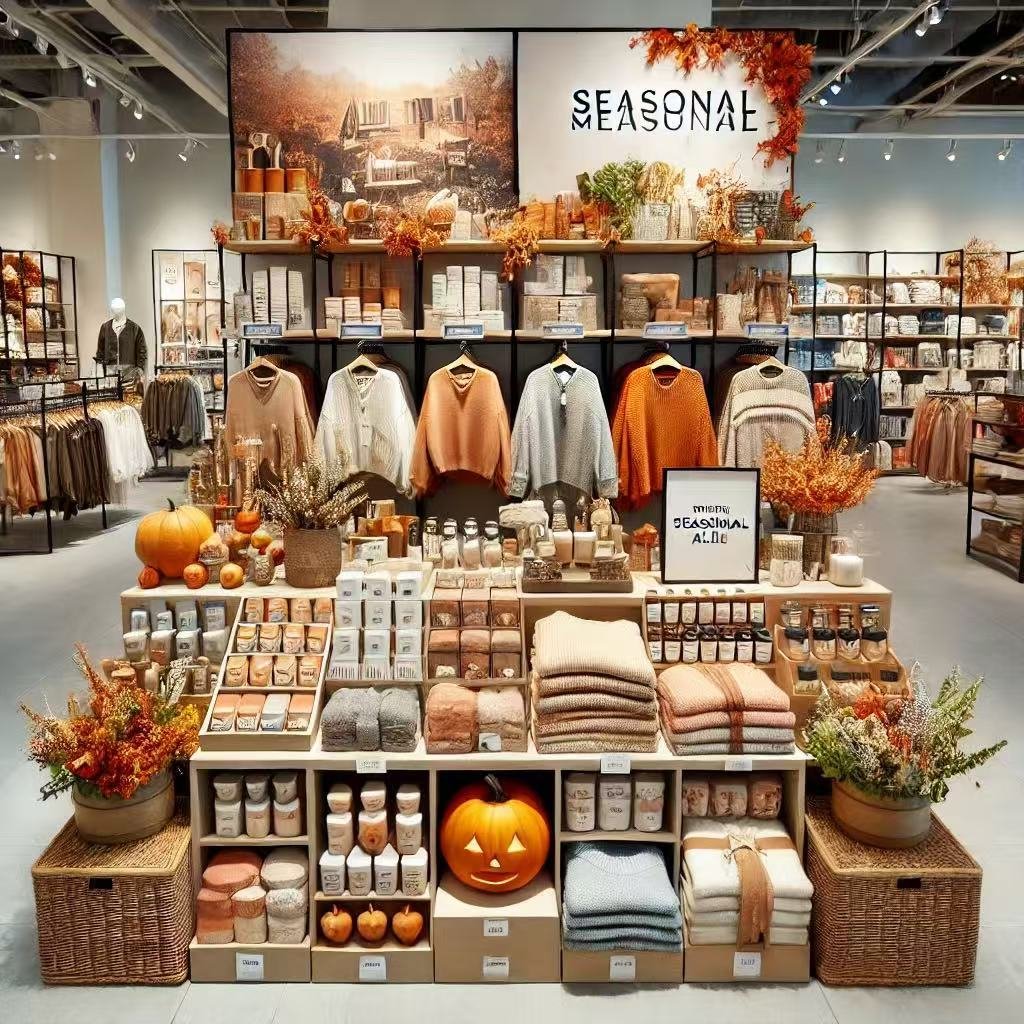
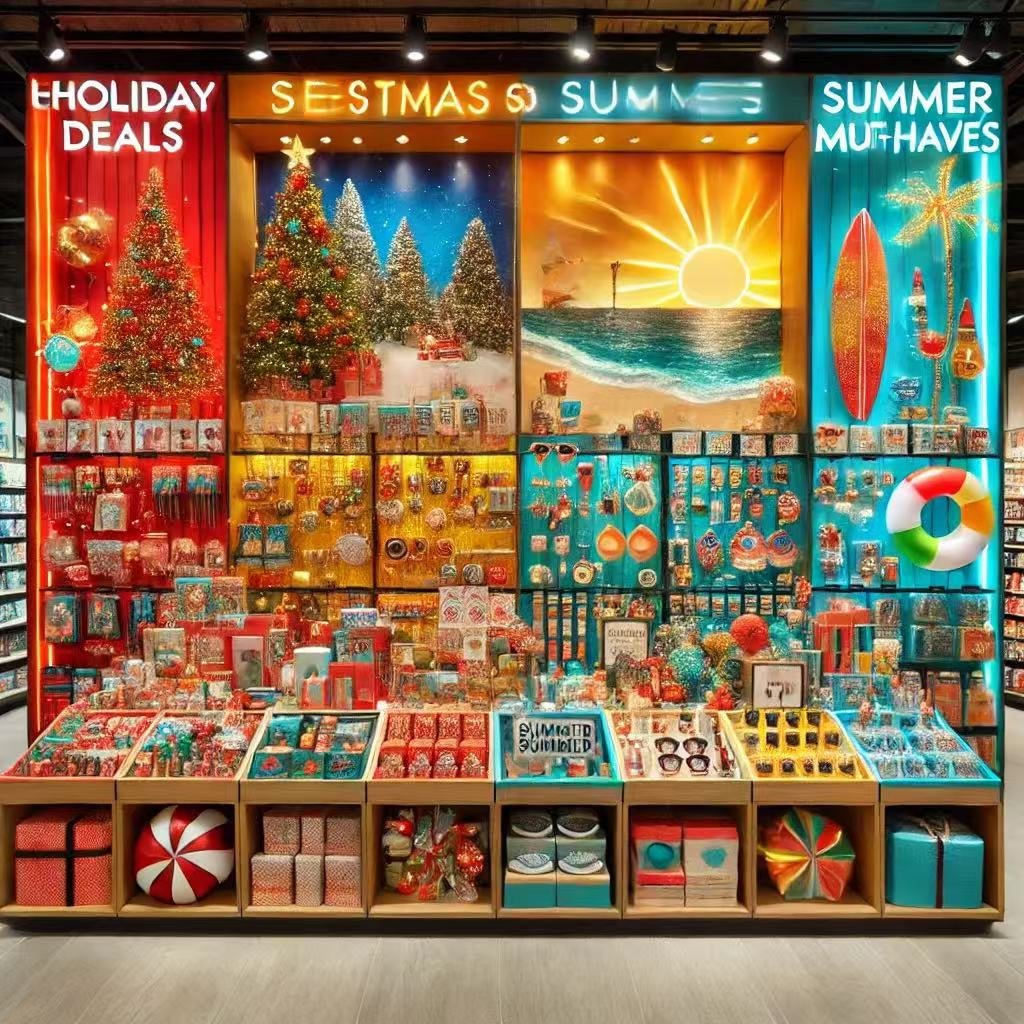
Visual merchandising is a powerful tool for retail success. It transforms ordinary stores into engaging spaces. By focusing on how products look, you can attract customers and boost sales. Let me guide you through the best practices for visual merchandising.
The Importance of Visual Merchandising
Visual merchandising creates the first impression. When customers walk into your store, the visuals must captivate them. A well-designed store layout helps retain customers and drives impulse purchases.
Consider this: a dull display leaves customers uninterested. In contrast, vibrant visuals spark curiosity and encourage exploration. This impact makes visual merchandising essential for any retail business.
It also communicates your brand identity. Whether your store is chic or casual, visuals reflect your values. By investing in creative displays, you enhance the shopping experience.
Using Colors to Influence Emotions
Colors play a significant role in visual merchandising. They evoke emotions and influence decisions. For instance, warm colors like red and orange create urgency. These are perfect for sales or promotions.
Cool colors like blue and green offer a calming effect. Use them in sections where customers browse high-end or luxury items.
Create contrast to make products pop. Pair bright displays with neutral backgrounds. This technique draws attention to the merchandise.
You can also use color themes for seasons or events. During Christmas, opt for red and gold to evoke a festive mood. This consistency strengthens your store’s identity.
The Power of Lighting
Lighting transforms how customers perceive products. Bright lighting makes items more appealing. Dim lighting creates a relaxed atmosphere for certain zones.
Spotlights work wonders for highlighting specific products. Use them for high-margin or seasonal items. They draw attention and create a sense of exclusivity.
Natural light adds warmth and authenticity. If possible, position displays near windows to utilize sunlight.
Experiment with different lighting types to find what works best. For example, LED lights are energy-efficient and versatile. They allow you to adjust brightness easily.
Arranging Displays Creatively
Creative displays engage customers and spark curiosity. Instead of stacking items, use artistic arrangements. For example, create pyramids with products to add visual interest.
Incorporate props that match the theme. For instance, use beach umbrellas for summer collections. These props make your displays memorable.
Change displays regularly to maintain customer interest. Stale setups make your store feel outdated. By rotating products, you give shoppers a reason to return.
The Role of Signage
Signage complements visual merchandising. It communicates information clearly and enhances navigation.
Use bold, easy-to-read fonts for signs. Highlight promotions or discounts with large text. Ensure the color scheme matches your brand’s identity.
Directional signs guide customers to different sections. They reduce confusion and improve the shopping experience.
You can also add storytelling to your signage. For example, use text to share a product’s unique story. This personal touch builds emotional connections with customers.
Grouping Products Effectively
Grouping related products enhances convenience. Customers appreciate displays that show how items complement each other.
For example, pair shoes with socks or bags with wallets. These combinations encourage additional purchases.
Use the rule of three for visual balance. Display items in groups of three to create symmetry. This technique pleases the eye and feels natural.
Remember to keep displays neat and organized. Clutter distracts customers and reduces the impact of your visuals.
Engaging the Senses
Engaging senses beyond sight enriches the shopping experience. Add elements that appeal to touch, smell, and hearing.
For instance, allow customers to touch fabrics or sample products. Use fragrances to evoke positive feelings. Soft background music also creates a pleasant atmosphere.
These sensory details make your store more inviting. Customers are likely to spend more time exploring.
Incorporating Technology
Technology adds a modern touch to visual merchandising. Digital displays showcase products dynamically. They allow you to rotate images or videos easily.
Interactive screens engage customers directly. For example, kiosks can suggest products based on customer preferences.
Use augmented reality (AR) to let customers visualize items. This technology is especially useful for furniture or fashion stores.
By embracing technology, you stay ahead of trends and create memorable experiences.
Seasonal and Thematic Displays
Seasonal displays keep your store fresh and relevant. Update your visuals to match holidays or special occasions.
For example, Valentine’s Day displays can feature heart shapes and red themes. Summer setups might include beach accessories and bright colors.
Thematic displays also work for product launches or sales events. They grab attention and make your store stand out.
Plan these displays in advance to ensure consistency. Use props, colors, and signage that align with the theme.
Measuring Effectiveness
Visual merchandising is not just about aesthetics. It must deliver results. Track sales data to measure the impact of your visuals. For instance, monitor how featured products perform compared to others. Adjust your displays based on these insights. Conduct surveys to gather customer feedback. Ask what they liked about the displays and what could improve.
Visual merchandising requires constant refinement. By analyzing data, you can optimize your strategies.
Training Your Team
Your team plays a crucial role in implementing visual merchandising. Train them to arrange displays effectively.
Provide guidelines for maintaining cleanliness and organization. Ensure they understand the importance of rotating products regularly.
Encourage creativity and welcome new ideas. A motivated team can bring your vision to life.
Staying Updated with Trends
Retail trends evolve quickly. Staying updated ensures your visuals remain competitive.
Follow industry news and attend trade shows for inspiration. Observe how successful brands use visuals.
Experiment with trends that align with your store’s identity. For example, eco-friendly displays appeal to environmentally conscious customers.
Adapt trends thoughtfully to maintain originality.
Conclusion
Visual merchandising is an art and science. It blends creativity with strategy to attract customers and increase sales.
By using colors, lighting, and innovative displays, you can create an engaging store experience. Incorporate technology and stay updated with trends to stay ahead.
Keep refining your visuals based on customer feedback and sales data. With these tips, your store can achieve its full potential. Start implementing them today and watch your business grow!
Promotions and Discounts
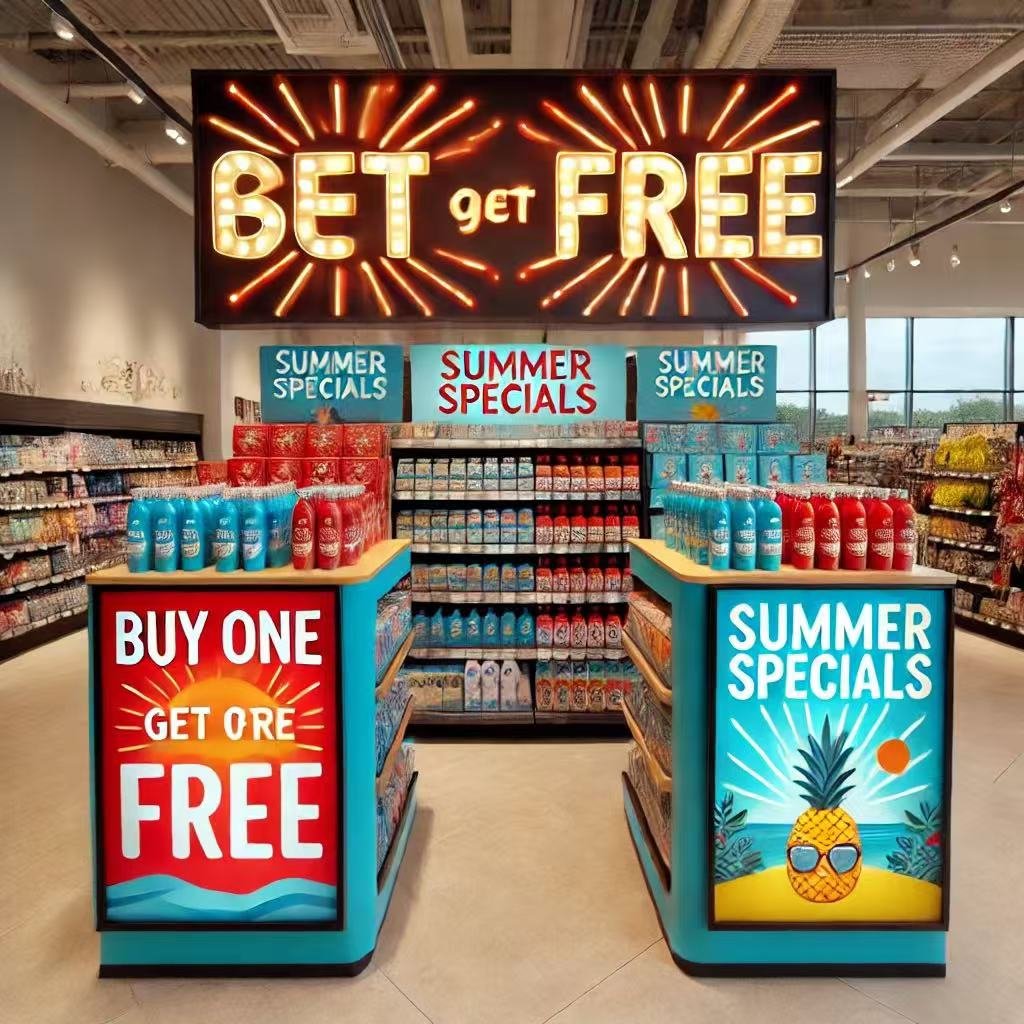
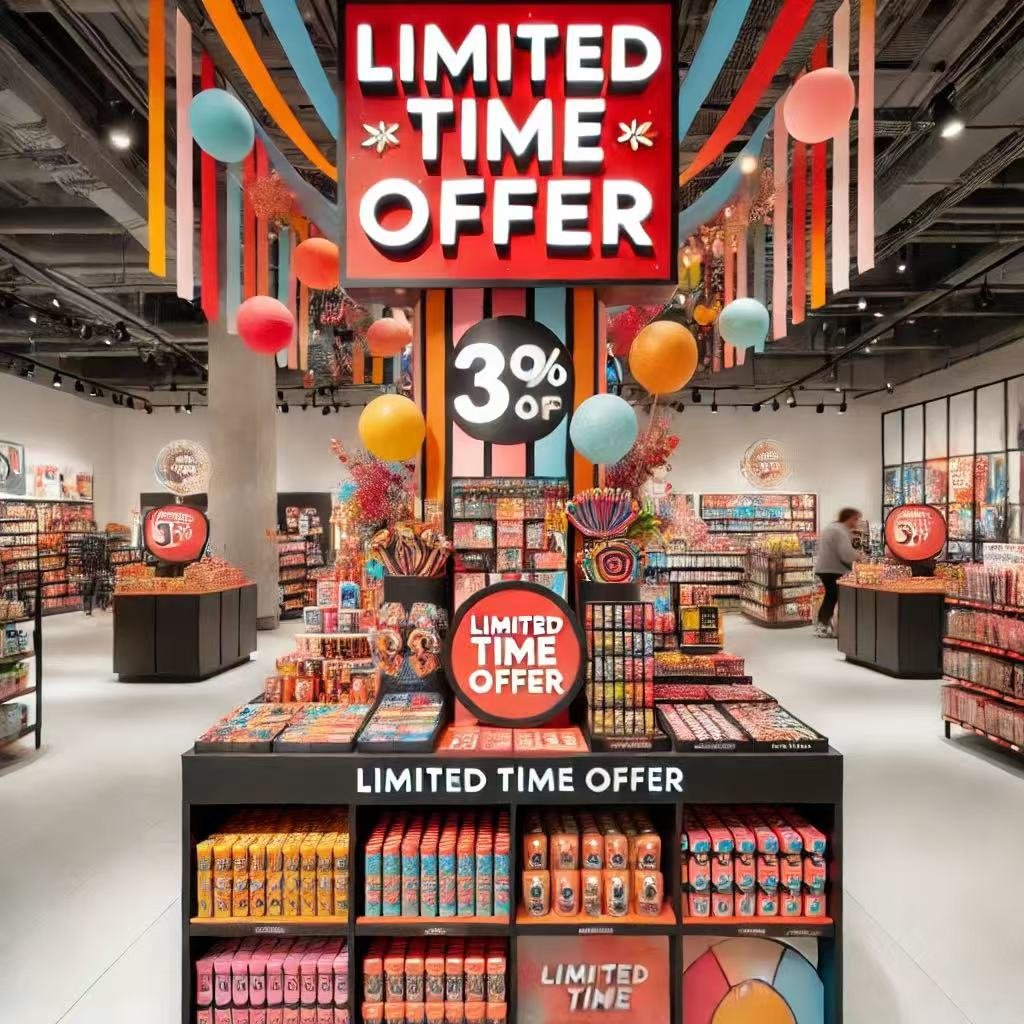
Promotions and discounts play a vital role in retail merchandising. They attract customers, increase sales, and create excitement in your store. A well-designed promotion strategy ensures maximum impact. Let’s dive deeper into the basics of promotions and discounts.
The Importance of Promotions and Discounts
Promotions and discounts are more than just price reductions. They are tools to drive customer behavior. Shoppers love deals and feel a sense of accomplishment when they save money.
For example, a “Buy One, Get One Free” offer encourages bulk purchases. It creates urgency and boosts overall sales. Similarly, discounts on slow-moving inventory help clear stock and free up space for new items.
Promotions also create customer loyalty. Shoppers are more likely to return if they know your store offers good deals regularly. Building this trust can lead to repeat business and long-term relationships.
Transitioning from a basic discount to a well-structured promotional campaign requires careful planning. Let’s explore the different types of promotions in retail.
Types of Promotions and Discounts
Understanding the types of promotions helps you choose the best strategy. Each type serves a specific purpose and appeals to different customer groups.
Percentage Discounts
Percentage discounts are straightforward. Offers like “20% Off” are easy to understand and widely effective. These discounts work well during seasonal sales or clearance events. Customers feel they are getting significant value.
Buy More, Save More
This type of promotion encourages customers to purchase in bulk. For example, “Buy 2, Get 1 Free” increases the average transaction value. Such deals are especially effective for consumable products or accessories.
Flash Sales
Flash sales create urgency. Limited-time offers like “50% Off for the Next 2 Hours” attract impulsive buyers. These promotions are ideal for creating excitement and driving traffic during slow periods.
Bundling Offers
Bundling combines multiple products at a discounted price. For instance, “Buy a Sofa and Get a Coffee Table at 30% Off.” This strategy works well for complementary items. It increases the perceived value of the deal.
Loyalty Rewards
Loyalty programs incentivize repeat purchases. Offering points or discounts for frequent shoppers builds long-term relationships. These programs not only increase sales but also enhance customer retention.
Planning Effective Promotions
Promotions require planning to achieve desired results. A poorly executed promotion can harm profits and confuse customers.
Start by identifying your goal. Is it to increase sales, clear inventory, or attract new customers? Each goal requires a different approach.
Next, set a budget. Determine how much you can afford to spend without compromising your margins.
Choose the right timing. Seasonal promotions, such as holiday discounts, have a greater impact. Analyze your sales data to identify peak shopping periods.
Finally, communicate the promotion effectively. Use signage, digital ads, and in-store announcements to inform customers.
Using Visual Merchandising for Promotions
Visual merchandising enhances the impact of promotions. Customers are more likely to notice deals when they are visually appealing.
Place promotional displays in high-traffic areas. For example, set up a table with discounted items near the entrance. Use bold colors and clear signage to draw attention.
Lighting can also highlight promotional sections. Bright, focused lights make the display stand out.
Keep the display neat and organized. A cluttered space can overwhelm customers and reduce interest.
Update promotional displays regularly. This keeps the store fresh and maintains customer interest.
Leveraging Technology for Promotions
Technology plays a crucial role in modern promotions. Digital tools make it easier to create personalized and targeted offers.
For example, use customer data to identify buying patterns. This helps you design promotions that match their preferences. Email marketing is another effective tool. Send personalized offers to customers based on their shopping history. Social media platforms also amplify promotions. Share limited-time deals or flash sales to reach a broader audience.
Additionally, consider using in-store digital screens. These can showcase rotating promotions and keep customers informed.
Measuring the Success of Promotions
Promotions should be evaluated to ensure they meet objectives. Measuring success helps you refine strategies and improve future campaigns.
Track metrics like sales volume, foot traffic, and customer feedback. For example, a significant sales spike during a promotion indicates its effectiveness.
Use point-of-sale (POS) systems to analyze data. These systems provide insights into what products sold the most and which promotions performed best. Customer surveys also offer valuable feedback. Ask shoppers what they liked or disliked about a promotion. Regularly review your promotional strategies. Adapt based on what works and eliminate ineffective tactics.
Avoiding Common Promotion Mistakes
Promotions can backfire if not planned carefully. Avoid these common mistakes to maximize effectiveness.
Offering Discounts Too Frequently
Frequent discounts may devalue your products. Customers might wait for sales instead of paying full price.
Limit promotions to special occasions or slow seasons. This maintains the perceived value of your products.
Ignoring Profit Margins
Deep discounts can harm your profits. Always calculate margins before launching a promotion. Ensure that the deal is sustainable for your business.
Poor Communication
Customers must know about your promotions. Failing to communicate effectively reduces their impact.
Use multiple channels to spread the word. Leverage social media, email campaigns, and in-store announcements.
Overcomplicating the Offer
Keep your promotions simple. Complicated terms confuse customers and reduce participation.
For instance, avoid promotions with multiple conditions. A clear “Buy One, Get One Free” deal is more effective than a complex reward system.
Combining Promotions with Customer Experience
Promotions should enhance the overall shopping experience. Customers should feel excited, not pressured.
Train your staff to explain promotions clearly. They should also assist customers in finding deals that suit their needs.
Create a positive atmosphere during promotional events. Use music, decorations, or giveaways to make the experience enjoyable.
Satisfied customers are more likely to return. A good experience during a promotion builds loyalty and trust.
Seasonal Promotions and Their Impact
Seasonal promotions create excitement and align with customer expectations. They also capitalize on increased spending during holidays.
For example, Black Friday and Christmas sales are popular worldwide. Customers actively seek deals during these times.
Plan seasonal promotions. Focus on items that are in high demand during the season.
Incorporate themes into your displays. For instance, use festive colors and decorations for holiday sales.
The Role of Discounts in Building Relationships
Discounts are not just about immediate sales. They also build long-term customer relationships.
For example, a first-time discount for new customers creates a positive impression. They are more likely to return for future purchases.
Similarly, exclusive discounts for loyal customers show appreciation. This strengthens the bond between the brand and the customer.
Conclusion
Promotions and discounts are powerful tools in retail merchandising. When planned and executed well, they attract customers, boost sales, and create loyalty.
From flash sales to loyalty rewards, each strategy has its unique benefits. Use visual merchandising and technology to amplify their impact.
Measure results and avoid common mistakes to ensure success. Most importantly, keep the customer experience at the center of your promotional efforts. With the right approach, promotions can transform your business and build lasting customer relationships. Start planning your next promotion today!
Understanding Your Customer
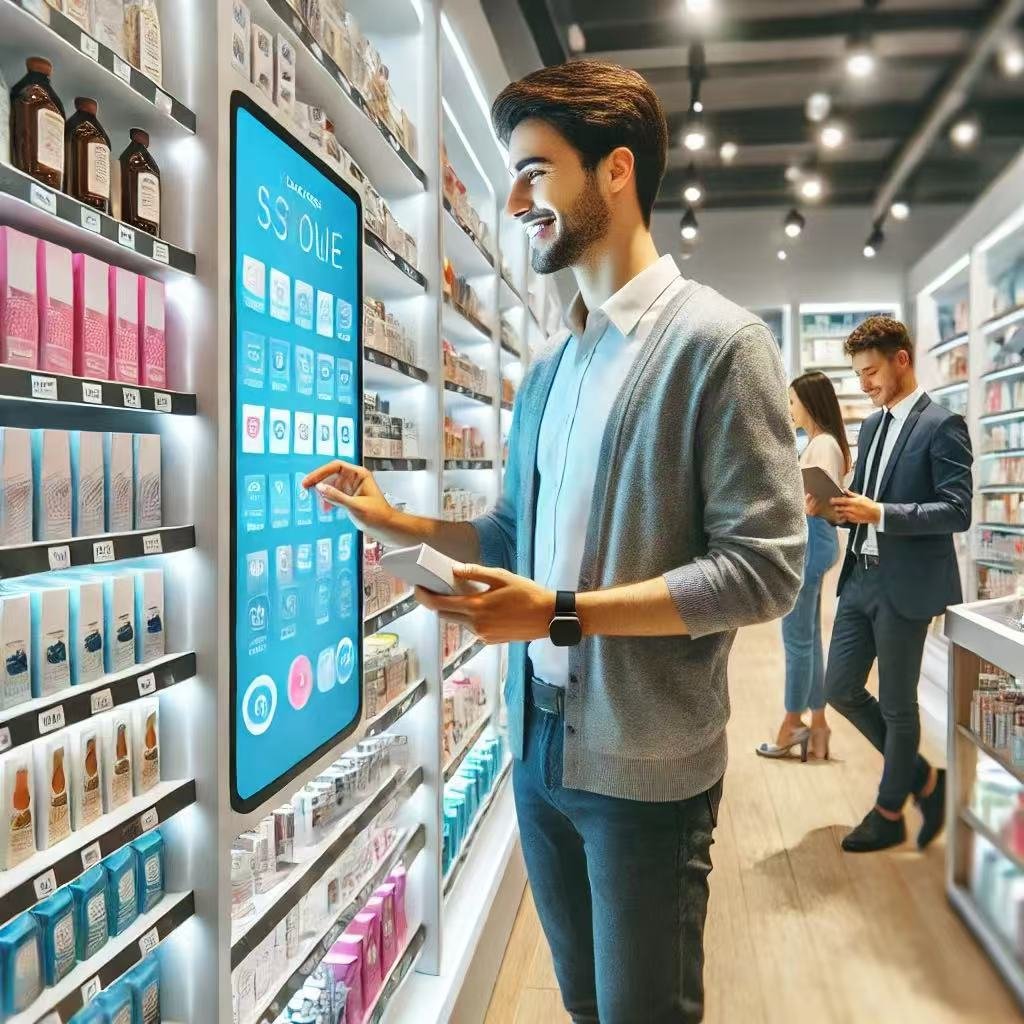
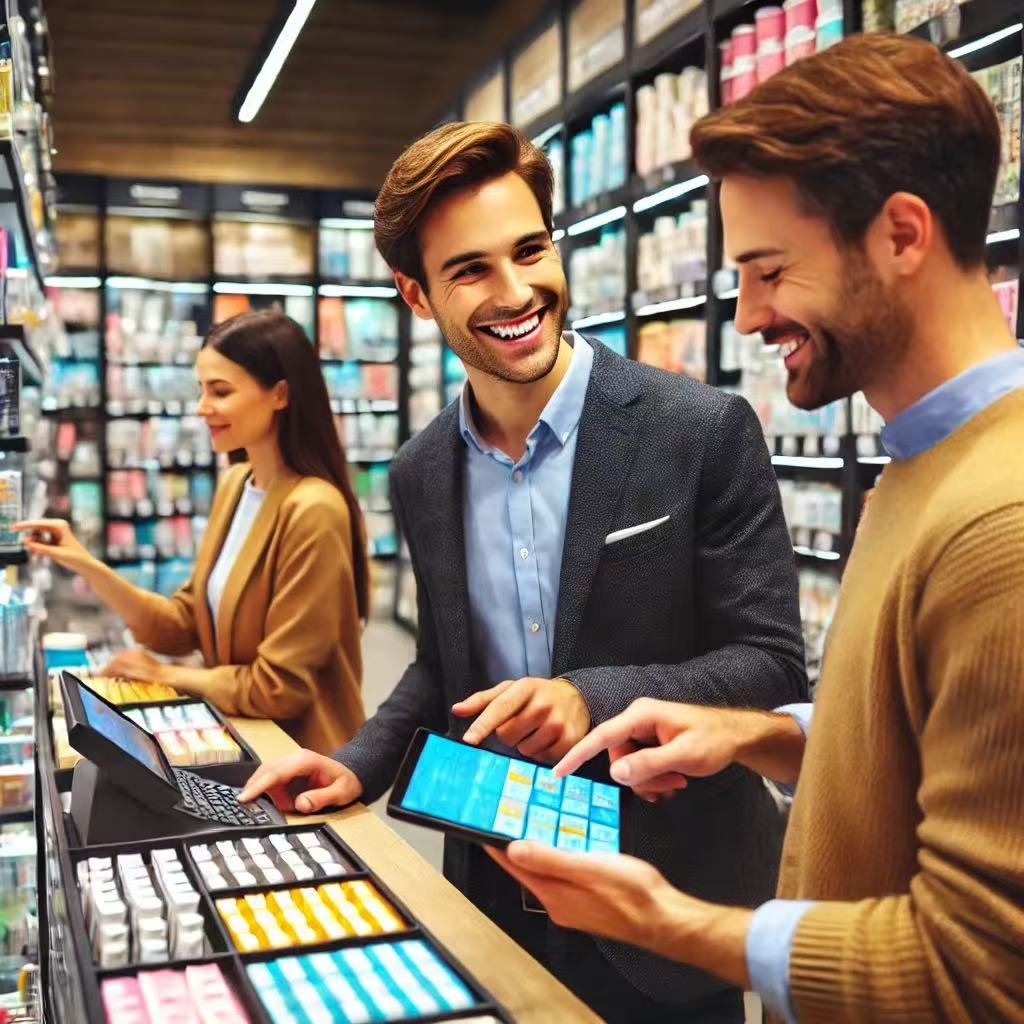
Understanding your customer is the foundation of successful retail merchandising. Every decision, from product selection to store design, revolves around meeting their needs. By knowing your customers well, you can create personalized experiences and boost satisfaction. Let’s explore how to understand your customer deeply.
Why Understanding Your Customer Matters
Knowing your customer helps you serve them better. When you understand their preferences, shopping habits, and pain points, you can offer solutions tailored to them.
For example, Ariel, a typical customer persona for Fairwill Display, values cost-effective yet high-quality products. He is price-sensitive but refuses to compromise on quality. Keeping these preferences in mind, we can design a strategy that appeals to him.
Understanding your customer also builds trust and loyalty. When customers feel seen and valued, they are more likely to return. Moreover, personalized experiences encourage repeat purchases.
Customer understanding is not a one-time task. Preferences and behaviors change over time. Regularly updating your insights ensures you stay relevant.
Identifying Your Target Audience
Start by identifying your target audience. These are the people most likely to buy your products.
Demographics play a key role. Consider age, gender, income level, and location. For example, our target audience includes wholesalers, store fixture suppliers, and boutique store owners.
Psychographics add depth to this understanding. They reveal interests, values, and shopping behaviors. For instance, Ariel is lively, cheerful, and passionate about store fixtures. These traits influence his buying decisions.
Use surveys, focus groups, or market research to gather this information. The more detailed your understanding, the better you can tailor your offerings.
Segmenting Your Customers
Customer segmentation divides your audience into smaller groups. Each group shares similar traits or behaviors.
Common segmentation criteria include:
- • Demographics: Age, income, or occupation
- • Geographics: Location or climate
- • Behavioral: Purchase frequency or brand loyalty
- • Psychographics: Lifestyle or interests
For example, Ariel represents a segment focused on affordable yet durable products. Another segment might prioritize premium designs over price.
Segmenting helps you create targeted marketing campaigns. It also improves product recommendations and promotional offers.
Gathering Customer Feedback
Customer feedback provides direct insights into their needs. Use surveys, online reviews, or social media interactions to collect feedback.
For instance, you can ask customers about their shopping experience. Questions like, “What do you like most about our products?” or “What can we improve?” are effective.
Analyze recurring themes in the feedback. Positive comments highlight strengths to build upon. Criticisms reveal areas needing improvement.
Acting on feedback shows customers you value their opinions. It also helps refine your offerings and enhance satisfaction.
Observing Customer Behavior
Observing how customers interact with your store offers valuable insights. Pay attention to their movement, product choices, and time spent in different areas.
For example, do customers linger in certain sections? Do they avoid specific aisles? These patterns reveal what works and what needs adjustment.
Digital tools like heatmaps or tracking systems provide detailed behavior analytics. They show high-traffic zones and popular products.
Behavior observation complements feedback collection. Together, they provide a complete picture of customer preferences.
Adapting to Customer Needs
Understanding your customer is only the first step. Adapting your strategies to meet their needs is equally important.
For instance, Ariel prefers cost-effective products made from E1-grade boards and tempered glass. To cater to him, you could highlight these features in your marketing materials.
Flexibility is key. Trends and preferences change quickly. Stay updated and be ready to adjust.
Test new ideas regularly. For example, try rearranging displays or introducing new promotions. Monitor customer response and refine accordingly.
Building Customer Personas
Customer personas are fictional profiles representing your target audience. They bring your customer insights to life.
For example, Ariel is a 40-year-old from Sweden. He is lively, cheerful, and values quality at a reasonable price. He shops for store fixtures that combine durability with affordability.
Creating personas helps in decision-making. They serve as a reference point for marketing, product development, and store design.
Use real data to build accurate personas. Include details like goals, challenges, and shopping habits. The more specific, the better.
Using Technology for Better Insights
Technology enhances customer understanding. Digital tools provide data on customer preferences and behaviors.
For example, Google Analytics tracks online interactions. It reveals which products attract the most attention. Social media platforms also offer valuable insights.
CRM (Customer Relationship Management) systems store customer data. They help identify purchase patterns and predict future needs.
Leverage these tools to stay informed. Technology makes understanding your customer faster and more precise.
Personalizing the Customer Experience
Personalization is a direct result of understanding your customer. Tailored experiences make customers feel valued and improve satisfaction.
For instance, Ariel might appreciate customized recommendations based on his past purchases. You can also send targeted promotions highlighting affordable yet high-quality products.
In-store, use signage or displays that resonate with specific customer segments. For example, highlight “Best Value” products for price-sensitive shoppers.
Personalization requires consistent effort. Update your customer insights regularly to keep experiences relevant.
Anticipating Customer Expectations
Understanding your customer goes beyond current needs. Anticipating future expectations sets you apart.
For example, environmental sustainability is becoming increasingly important. Offering eco-friendly products might appeal to customers like Ariel.
Stay informed about industry trends and emerging preferences. Regularly survey your audience to gauge interest in new ideas.
Proactively meeting expectations strengthens customer loyalty. It also positions your brand as a leader in the market.
Enhancing Communication with Customers
Clear communication improves your understanding of customers. It also builds trust and strengthens relationships.
Use multiple channels to engage with your audience. Social media, email newsletters, and in-store interactions are effective.
Ask open-ended questions to gather deeper insights. For example, “What inspires you to shop with us?” or “How can we improve your experience?”
Respond promptly to queries or concerns. This shows customers you value their time and opinions.
Conclusion
Understanding your customer is an ongoing process. It involves identifying your audience, gathering feedback, and observing behavior.
By applying these insights, you can adapt strategies, personalize experiences, and anticipate future needs. The result is a stronger connection with your audience and better business outcomes. Take the time to understand your customers. The effort will pay off in loyalty, satisfaction, and increased sales.
Seasonal Merchandising
Seasonal merchandising is a powerful tool for attracting customers and driving sales. By aligning your store with seasonal themes, you can create a fresh and engaging shopping experience. Let’s dive into how you can make the most of seasonal merchandising.
Why Is Seasonal Merchandising Important
Seasonal merchandising helps stores stay relevant and appealing. Customers are more likely to shop in a store that reflects the current season or holiday. For example, festive decorations during Christmas evoke excitement and encourage purchases.
It also allows you to highlight seasonal products. Customers often look for specific items during holidays or weather changes. Displaying these prominently ensures they don’t miss them.
Seasonal merchandising builds customer loyalty. Regular updates show that your store is dynamic and customer-focused. It creates anticipation, encouraging repeat visits.
Planning for Seasonal Themes
Planning is the foundation of successful seasonal merchandising. Start by identifying key seasons and holidays that matter to your target audience. For example, Christmas, Easter, or summer sales may be important depending on your location.
Develop a merchandising calendar. This outlines when to set up, promote, and remove seasonal displays. Early preparation gives you a competitive edge and ensures you have the right inventory.
Collaborate with your team to brainstorm creative ideas. For instance, think about how you can use colors, props, and layouts to convey a seasonal theme. Incorporate your brand identity to maintain consistency.
Choosing Seasonal Products
Selecting the right products is crucial. Focus on items that align with the season or holiday. For example, during winter, highlight warm clothing or festive decorations. In summer, promote cooling appliances or beach accessories.
Group seasonal products together. This makes it easier for customers to find what they need. For instance, a “Holiday Essentials” section can showcase decorations, gifts, and wrapping supplies.
Ensure your inventory matches demand. Analyze past sales data to predict what customers will buy. Overordering seasonal products can lead to waste, while understocking may disappoint customers.
Creating Visual Impact
Visual merchandising plays a vital role in seasonal displays. Use colors, lighting, and props to create an immersive experience. For instance, red and green are classic Christmas colors, while pastels work well for spring.
Invest in eye-catching signage. Use bold fonts and seasonal phrases like “Holiday Deals” or “Summer Must-Haves.” Signs should guide customers to your seasonal sections.
Lighting enhances the mood. Warm lights create a cozy atmosphere for winter, while bright lights evoke energy for summer. Adjust your lighting to match the theme.
Props add personality to your displays. For example, snowflakes and reindeer create a winter wonderland. Beach balls and umbrellas bring a summer vibe. Be creative but avoid overcluttering.
Engaging Customers with Interactive Displays
Interactive displays grab attention and keep customers engaged. These can range from touchscreens to photo booths. For example, a Valentine’s Day display might include a backdrop for couples to take pictures.
Encourage customer participation. Set up contests, like “Guess the Number of Ornaments” during Christmas. Reward participants with discounts or gifts.
Use digital displays to showcase promotions or product demonstrations. For instance, play videos of your products in action, like winter jackets being tested in cold weather. This builds trust and interest.
Interactive displays create memorable experiences. Customers are more likely to return when they enjoy shopping at your store.
Leveraging Technology for Seasonal Merchandising
Technology enhances seasonal merchandising. Use data analytics to track sales trends and identify popular products. This helps you decide what to feature in your displays.
Digital signage allows flexibility. You can update promotions or themes instantly. For example, switch from Halloween to Thanksgiving visuals with minimal effort.
E-commerce integration is also essential. Highlight seasonal products on your website or app. Offer exclusive online deals to attract more customers.
Social media amplifies your efforts. Share photos of your seasonal displays and engage with customers. Encourage them to post pictures of their shopping experience using a branded hashtag.
Adapting to Different Seasons and Cultures
Seasonal merchandising varies across regions and cultures. For example, winter in Australia falls in July, while it’s in December for the USA. Understand your audience’s preferences to tailor your displays.
Cultural holidays like Lunar New Year or Diwali also offer opportunities. Use relevant themes and colors to connect with your audience. For example, red and gold are auspicious colors for Lunar New Year.
Adapt your inventory accordingly. Stock products that cater to cultural or regional needs. For example, include lanterns for Mid-Autumn Festival or traditional sweets for Eid.
Respect cultural sensitivities. Ensure your displays are inclusive and considerate of different beliefs and traditions.
Promoting Seasonal Merchandising
Promotion is key to attracting attention to your seasonal displays. Use multiple channels to spread the word. For example, send newsletters highlighting your holiday deals and decorations.
Create urgency with limited-time offers. For instance, “Only Two Days Left for Christmas Discounts” motivates customers to act quickly.
Social media is a powerful tool. Post behind-the-scenes content of your team setting up seasonal displays. Use hashtags to increase visibility and encourage customer engagement.
Collaborate with influencers or local businesses. They can promote your seasonal efforts to a wider audience. For example, a fashion blogger might showcase your summer collection.
Measuring the Success of Seasonal Merchandising
Evaluate your efforts to learn what works and what doesn’t. Track sales, foot traffic, and customer feedback during the season. These metrics provide valuable insights.
Use surveys to gather customer opinions. Ask them about their favorite displays or what they’d like to see next season.
Compare results with previous seasons. Identify patterns and trends to refine your strategies. For instance, if a Halloween display boosted sales significantly, replicate similar tactics for other holidays.
Regular evaluation ensures continuous improvement. It helps you stay competitive and meet customer expectations.
Overcoming Challenges in Seasonal Merchandising
Seasonal merchandising has its challenges. For example, tight timelines can make preparation stressful. Start early and stick to your merchandising calendar to stay on track.
Inventory management is another challenge. Overstocking leads to waste, while understocking results in missed opportunities. Monitor sales data closely and adjust your orders accordingly.
Balancing seasonal themes with your brand identity can be tricky. Ensure your displays align with your overall image. For instance, if your brand is minimalist, avoid overly flashy decorations.
Adapt to unforeseen circumstances. For example, if a holiday is unexpectedly popular, be prepared to restock quickly. Flexibility is key to overcoming challenges.
Conclusion
Seasonal merchandising is a dynamic and rewarding strategy. It keeps your store relevant, engages customers, and drives sales. By planning effectively, creating visual impact, and leveraging technology, you can master seasonal merchandising.
Adapt to different cultures and seasons to connect with your audience. Promote your efforts across multiple channels to maximize reach. Finally, evaluate and refine your strategies to stay ahead of the competition.
Start planning your next seasonal display today. It’s an investment that will pay off in customer loyalty and increased revenue.
Why Fairwill Display
Choosing the right supplier for your retail needs is critical. Fairwill Display stands out in the competitive world of store fixtures. We provide quality, affordability, and reliability. Let’s explore why Fairwill Display is the ideal choice for your business.
High-Quality Materials
At Fairwill Display, we prioritize quality. Our glass showcases use E1 grade board and tempered glass. These materials are durable and eco-friendly. They ensure your displays remain sturdy and stylish for years.
Tempered glass provides extra safety. It resists scratches and withstands heavy usage. This feature makes it perfect for busy retail environments. E1 grade board adds to the durability while reducing environmental impact.
We believe quality should never be compromised. Our production process undergoes strict quality checks. These measures guarantee products meet your expectations.
Competitive Pricing
Affordability is one of our biggest strengths. We understand that price-sensitive customers seek cost-effective solutions. Fairwill Display combines high quality with competitive pricing.
How do we achieve this? Our in-house manufacturing keeps costs low. We avoid intermediaries, ensuring savings are passed to you. Bulk orders also qualify for attractive discounts.
Choosing us means getting premium products at affordable rates. You save money without sacrificing quality. This balance is what makes us unique in the market.
Tailored Solutions
We know that every business is different. That’s why we offer customized solutions. Whether you run a boutique or a large retail chain, we adapt to your needs.
Our team works closely with you to design the perfect displays. From size to style, we ensure the showcase matches your store’s aesthetics.
This tailored approach enhances your store’s appeal. It also helps you optimize space. Customized solutions make your store look professional and inviting.
Global Reach
Fairwill Display caters to clients worldwide. Our main markets include the USA, Sweden, and Australia. We understand the unique demands of different regions.
For example, we consider local preferences and regulations when designing products. This ensures our showcases meet global standards.
Our international shipping process is efficient. We deliver products safely and on time. With Fairwill Display, you can rely on seamless service, no matter where you are.
Dedicated Customer Support
We prioritize customer satisfaction. Our team is always available to assist you. From answering inquiries to providing after-sales support, we ensure a smooth experience.
We believe in building lasting relationships with our clients. Clear communication and prompt responses are part of our commitment.
Our support extends beyond the purchase. If you face any issues, our team resolves them quickly. This reliability makes us a trusted partner for your business.
Eco-Friendly Practices
Sustainability matters to us. We use materials that minimize environmental impact. For example, our E1 grade board reduces emissions and promotes responsible sourcing.
Our production processes also focus on efficiency. We aim to reduce waste and energy consumption. By choosing Fairwill Display, you contribute to a greener future.
This commitment to eco-friendliness resonates with modern consumers. It enhances your store’s image and aligns with global sustainability trends.
Trusted by Global Clients
Our reputation speaks for itself. Fairwill Display has built a loyal customer base over the years. Clients trust us for quality, affordability, and innovation.
Many wholesalers, store fixture suppliers, and boutique owners rely on our products. Their positive feedback motivates us to improve constantly.
By choosing Fairwill Display, you join a network of successful businesses. Our track record ensures you’re in safe hands.
Conclusion
Fairwill Display is more than a supplier. We are your partner in retail success. From high-quality materials to eco-friendly practices, we deliver exceptional value.
Our affordability, global reach, and dedicated support make us the preferred choice. Whether you need standard or customized solutions, we exceed expectations.
Choose Fairwill Display today. Let us help you elevate your store and grow your business.
